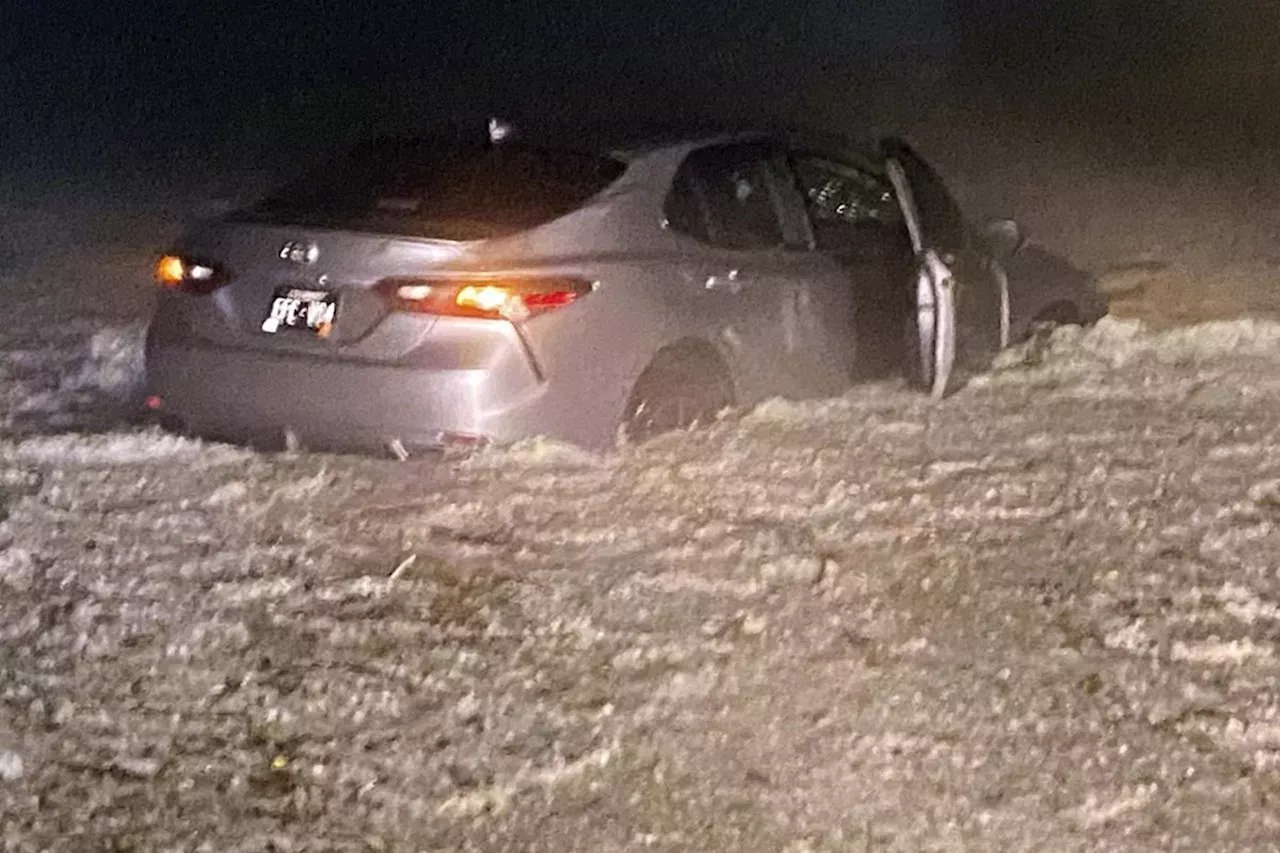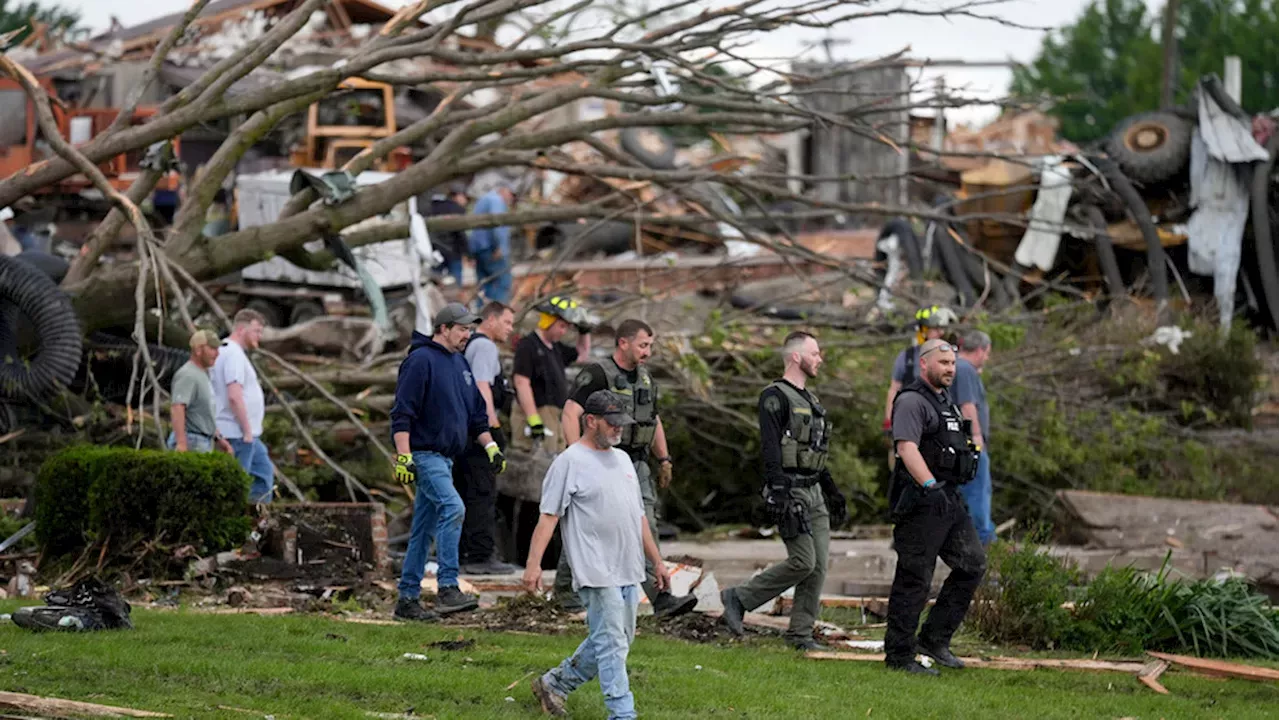Tornado Impact: Greenfield Iowa Tornado Damage

Greenfield iowa tornado damage – The tornado that struck Greenfield, Iowa, on July 19, 2023, was an EF4 tornado with peak winds of 170 mph. It was on the ground for 12.5 miles and had a maximum width of 1.25 miles.
The tornado caused extensive damage to Greenfield, destroying or damaging over 1,000 structures, including homes, businesses, and public buildings. The tornado also caused significant damage to the city’s infrastructure, including power lines, water mains, and roads.
Casualties, Greenfield iowa tornado damage
The tornado resulted in 12 fatalities and over 50 injuries. Many of the injuries were serious, and some of the victims are still recovering from their injuries.
The aftermath of the devastating tornado that struck Greenfield, Iowa, has left a trail of destruction in its wake. Homes have been reduced to rubble, businesses have been damaged beyond repair, and the community is reeling from the impact. In the midst of this tragedy, the greenfield tornado has become a symbol of both the resilience and the vulnerability of the human spirit.
As the community begins the long process of rebuilding, it is clear that the scars of this storm will remain for years to come.
Damage Assessment

In the aftermath of the devastating tornado that struck Greenfield, Iowa, a comprehensive damage assessment was conducted to evaluate the extent of destruction and guide recovery efforts.
The recent tornado in Iowa has caused widespread damage in Greenfield, leaving many residents without homes or power. The storm ripped through the town, destroying buildings and uprooting trees. Tornadoes in Iowa are not uncommon, but the severity of this storm has shocked the community.
Emergency crews are working to clear debris and restore power, but it will take time for Greenfield to recover from the devastating tornado damage.
Teams of engineers, architects, and emergency responders meticulously inspected affected areas, employing various methods to assess the damage:
Structural Damage
- Visual inspections of buildings and infrastructure, noting visible signs of damage, such as collapsed walls, shattered windows, and compromised foundations.
- Detailed structural assessments using specialized equipment to identify hidden damage, including cracks, deformations, and weakened load-bearing elements.
Roof Damage
- Examination of roofing materials, including shingles, tiles, and metal panels, for damage, missing elements, or signs of impact.
- Assessment of the underlying roof structure, such as trusses and rafters, for signs of collapse, bowing, or other structural issues.
Downed Power Lines
- Identification of downed power lines and damaged utility poles, posing potential safety hazards and disrupting essential services.
- Assessment of the extent of damage to electrical infrastructure, including transformers, substations, and transmission lines.
Recovery Efforts
In the immediate aftermath of the tornado, local authorities and emergency services sprang into action to coordinate response and recovery efforts. First responders worked tirelessly to rescue survivors, provide medical attention, and secure the affected areas. Emergency shelters were established to house those displaced from their homes, and essential supplies such as food, water, and clothing were distributed to those in need.
The devastating tornado that tore through Greenfield, Iowa, left a trail of destruction in its wake. While the community works to rebuild, residents can find solace in the nearby town of Greenville, Iowa . Greenville offers a peaceful respite with its charming shops, friendly locals, and scenic parks.
As Greenfield heals, Greenville stands as a symbol of hope and resilience, offering a glimpse of a brighter future amidst the devastation.
Role of Volunteers and Community Organizations
Volunteers and community organizations played a crucial role in providing assistance during the recovery process. Local churches, non-profit organizations, and community groups mobilized to offer a range of services, including debris removal, meal preparation, and emotional support. The outpouring of compassion and support from the community was instrumental in helping those affected by the tornado rebuild their lives.
Greenfield, Iowa has suffered significant tornado damage in recent years, including the devastating tornado in greenfield iowa that tore through the town in 2018. The damage from these storms has been extensive, affecting homes, businesses, and infrastructure. The community has come together to rebuild and recover from these events, and efforts are ongoing to improve the town’s resilience to future tornadoes.
Progress of Cleanup and Rebuilding Efforts
Cleanup and rebuilding efforts commenced as soon as the immediate danger had passed. Debris removal crews worked around the clock to clear streets and properties, while engineers and contractors assessed the extent of the damage and began planning for repairs and reconstruction. Temporary housing was provided for those whose homes were destroyed or severely damaged, and financial assistance was made available to help cover the costs of rebuilding.
Economic Impact
The Greenfield, Iowa tornado of 2023 left a devastating economic impact on the community. The twister’s fury caused widespread damage to businesses, infrastructure, and property, resulting in significant financial losses.
Damage to Businesses
Many businesses in Greenfield were severely damaged or destroyed by the tornado. The storm’s high winds ripped through buildings, shattering windows, and collapsing roofs. Several businesses, including restaurants, retail stores, and offices, were forced to close indefinitely, leading to lost revenue and unemployment for employees.
The greenfield iowa weather has been particularly severe this year, with a tornado causing significant damage to the town. The storm left a trail of destruction in its wake, damaging homes, businesses, and infrastructure. The community is now working to rebuild and recover from the devastating impact of the tornado.
Infrastructure Damage
The tornado also caused significant damage to Greenfield’s infrastructure. Power lines were downed, roads were blocked by debris, and water mains were ruptured. The cost of repairing and replacing damaged infrastructure will put a strain on the community’s resources.
Property Value Losses
The tornado’s destruction also impacted property values in Greenfield. Homes and other buildings that were damaged or destroyed saw their value plummet. This will have a negative impact on the local economy, as property values are a key factor in determining tax revenue and investment.
Estimated Cost of Repairs and Reconstruction
The estimated cost of repairs and reconstruction in Greenfield is still being assessed, but it is expected to be in the millions of dollars. The community will need to rely on federal and state aid, as well as private donations, to help cover the costs of rebuilding.
Environmental Impact
The Greenfield, Iowa tornado left a significant environmental impact, damaging trees, vegetation, and wildlife habitats. The tornado’s strong winds uprooted trees, snapped branches, and stripped leaves, leaving behind a trail of debris.
The damage to vegetation not only affected the local ecosystem but also contributed to soil erosion and increased runoff. The loss of trees and vegetation also reduced the area’s capacity to absorb carbon dioxide, further impacting the environment.
Wildlife Impact
The tornado’s impact on wildlife was also severe. Many animals were killed or injured, and their habitats were destroyed. The loss of vegetation and shelter left wildlife vulnerable to predators and exposure to the elements.
Mitigation Measures
Efforts were made to mitigate the environmental impact of the tornado. Volunteers and organizations worked to clear debris, replant trees, and restore wildlife habitats. These measures helped to reduce soil erosion, improve water quality, and provide shelter for wildlife.
Lessons Learned

The Greenfield, Iowa tornado left a trail of devastation and highlighted the need for improved disaster preparedness and response. Several lessons can be drawn from this tragic event.
Early Warning Systems
The tornado struck with little warning, underscoring the importance of effective early warning systems. While the National Weather Service issued tornado warnings, many residents did not receive them in time. This highlights the need for reliable and redundant warning systems, such as multiple weather apps, NOAA weather radios, and community sirens.
Evacuation Procedures
The tornado’s rapid and destructive path emphasized the need for clear and efficient evacuation procedures. Many residents were caught off guard, leading to confusion and delays. Establishing designated safe zones, developing evacuation plans, and conducting regular drills can help ensure a more organized and timely response in future events.
Disaster Preparedness
The tornado’s impact reinforced the importance of disaster preparedness at the individual and community levels. Having emergency kits, developing family communication plans, and knowing evacuation routes are crucial for minimizing the risks associated with severe weather events.
Community Resilience
In the aftermath of the tornado, the Greenfield community demonstrated remarkable resilience. Neighbors helped neighbors, volunteers arrived from across the state, and organizations provided support and assistance. This underscores the importance of fostering a strong sense of community and collaboration, which can be invaluable during times of crisis.